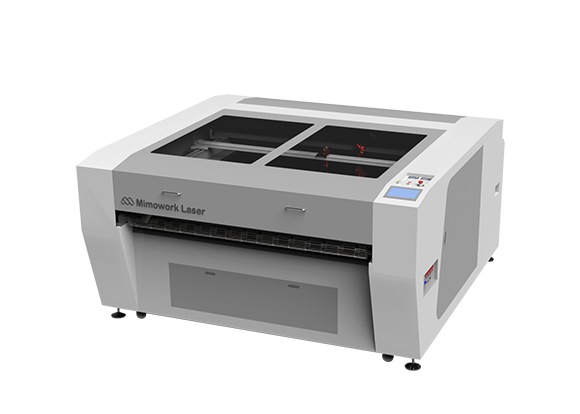Cutting Through Boundaries:
Exploring the Diverse Applications of Laser Cutting
Laser cutting has emerged as a groundbreaking technology with wide-ranging applications and a significant impact across various industries. Its precision, versatility, and efficiency have transformed the way materials are processed, revolutionizing fields such as manufacturing, architecture, fashion, and art. With its ability to cut through a diverse range of materials with utmost precision, laser cutting has become a driving force behind innovation and has opened up a world of possibilities for designers, engineers, and creatives alike.

What can you do with a laser cutting machine?
- Cutting:
Laser cutting technology is widely used for cutting both metal and non-metal materials. It can accurately cut complex-shaped materials such as metal sheets, plastics, wood, textiles, and more. Laser cutting is used in industries such as manufacturing, automotive, electronics production, and others.

- Engraving:
Laser engraving is a precise material processing technique used to inscribe text, patterns, or images on the surface of materials. It is widely applied in art and craft production, jewelry manufacturing, woodworking, and other fields. Laser engraving achieves high precision and detail without damaging the material.

- Punching:
Laser punching is the process of cutting or penetrating small holes in materials using a laser beam. This technique can be applied to punching requirements for various materials such as metal, plastic, paper, leather, and more. Laser punching is commonly used in manufacturing industries such as aerospace and sieve manufacturing.

In addition to the above applications, laser cutting can also be used for welding, surface treatment, mold manufacturing, and other fields. With the continuous development of laser technology, the applications of laser cutting in various industries will continue to expand and innovate.
Desktop Laser Cutting Machine:
This type of laser cutting machine is the most common. The laser emitter is placed on one side and the laser beam is transmitted to the laser cutting head through an external optical path. The processing range is generally 1.5 * 3m, 2 * 4m. Within the desktop category, there are specific structures such as cantilever type, gantry type, hybrid type, and more.
Desktop machines are mainly used for solid materials and find applications in various industries such as medical equipment, decorative signage, grain machinery, and other industries primarily focused on sheet processing.
Gantry-mounted Laser Cutting Machine:
In this type of laser cutting machine, the laser emitter is placed above the mechanical structure, moving together with the machine. This ensures a constant optical path and allows for a large effective cutting range, with widths ranging from 2 to 6 meters and lengths reaching tens of meters. Gantry-mounted machines are mainly used in heavy industries such as construction machinery, shipbuilding, locomotives, and are primarily aimed at cutting medium-thickness plates within the range of 3mm to 25mm.
Classification of Laser Cutting Machines
What are the measurement standards for laser cutting quality?
Currently, the cutting quality of metal laser cutting machines is measured based on the following seven points:
1. Surface roughness of the processed material after cutting.
2. Size and quantity of burrs and dross at the cut edges of the processed material.
3. Whether the edge angle of the cut is perpendicular or if there is excessive slope.
4. Dimensions of the cut edge fillet when starting the cut.
5. Thickness of the stripe produced during cutting.
6. Flatness of the cut surface.
7. Cutting thickness with the same power and power source.
Video Guide -how to choose machine?
What do you need to pay attention to?
1. Avoid staring at the laser beam for a long time.
Since the laser beam is invisible to the human eye, it is important not to stare at it for extended periods.
2. Avoid frequent contact with the lens.
The focusing lens of a laser cutting machine contains harmful elements (ZnSe). Avoid frequent contact with the lens, and dispose of discarded lenses properly instead of throwing them away randomly.
3. Wear a mask.
While processing materials such processing materials such as carbon steel or iron generally pose no significant issues. However, when processing large quantities of aluminum alloys or other alloy materials, inhaling the dust generated during cutting can be harmful to the human body, so wearing a mask is essential. Due to the strong reflectivity of aluminum plates, it is important to equip the laser head with a protective device to prevent injuries.
Choose Suitable Laser Cutter
Maintenance and cleaning for your laser cutter
Proper maintenance and cleaning are essential for ensuring that your laser cutter operates at its best. Regular cleaning of the laser lens and mirrors is essential for maintaining the quality of your cuts. It's also important to clean the cutting bed regularly to prevent debris from interfering with the cutting process.
It's a good idea to follow the manufacturer's recommended maintenance schedule for your laser cutter to ensure that it continues to operate at its best. This may include replacing filters, checking belts and bearings, and lubricating moving parts.
Safety precautions when using a laser cutter
It's essential to take proper safety precautions when using a laser cutter. Always wear protective eyewear and gloves when operating the machine. It's also important to ensure that the laser cutter is properly ventilated to prevent the buildup of harmful fumes.
Never leave the laser cutter unattended while it's in operation, and always follow the manufacturer's recommended safety guidelines.
Any questions about the operation of how to laser cut materials?
Post time: May-25-2023




